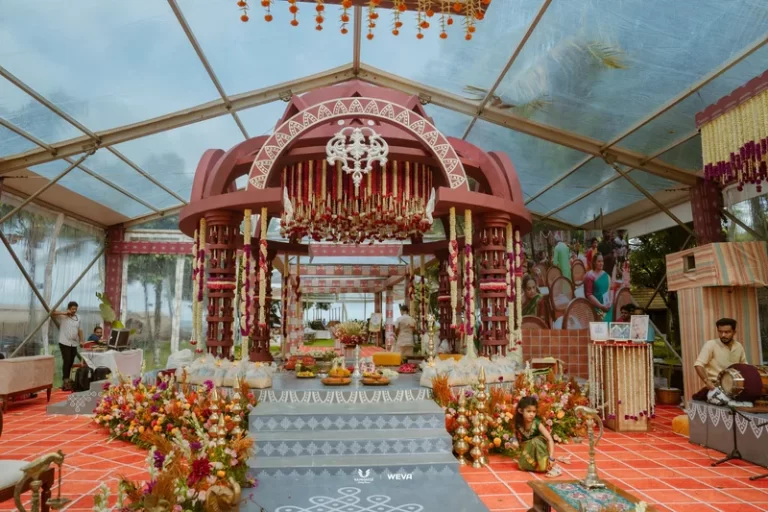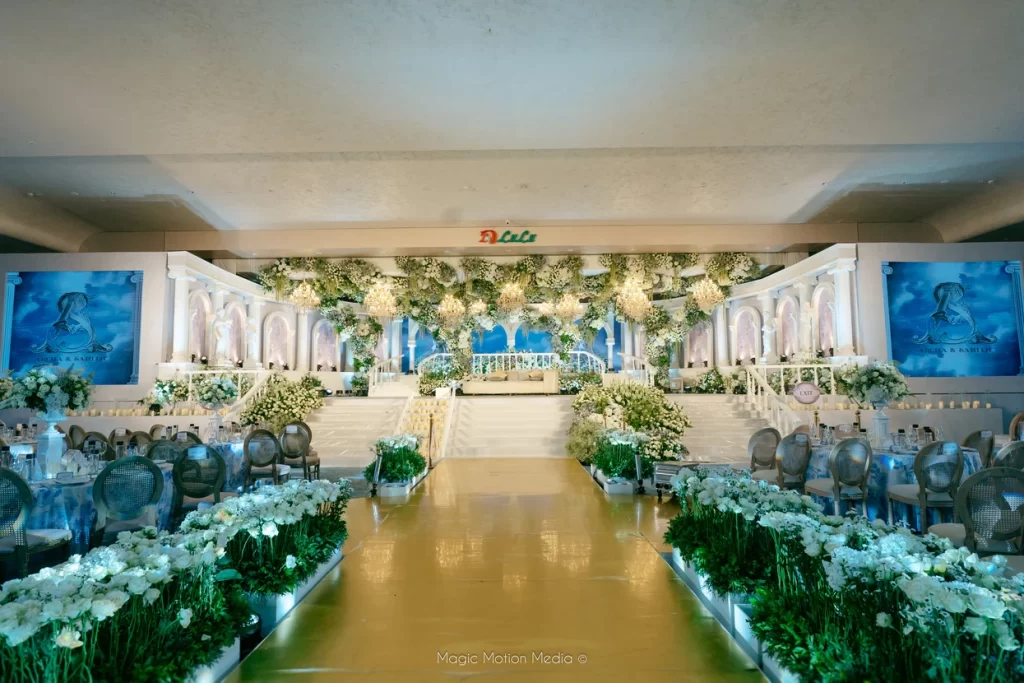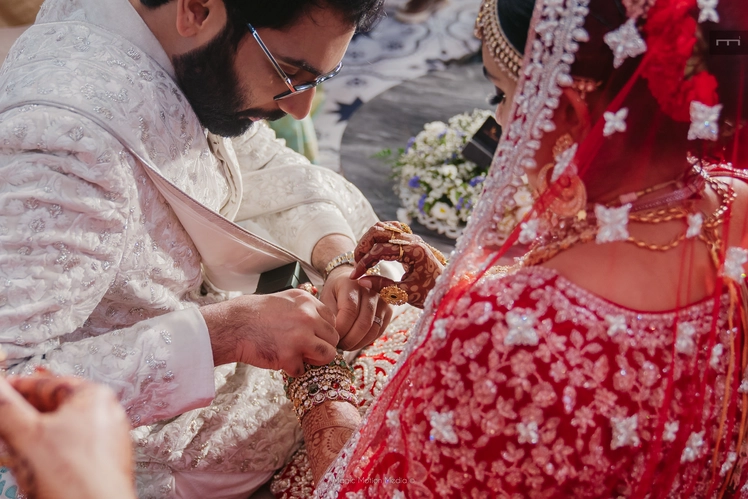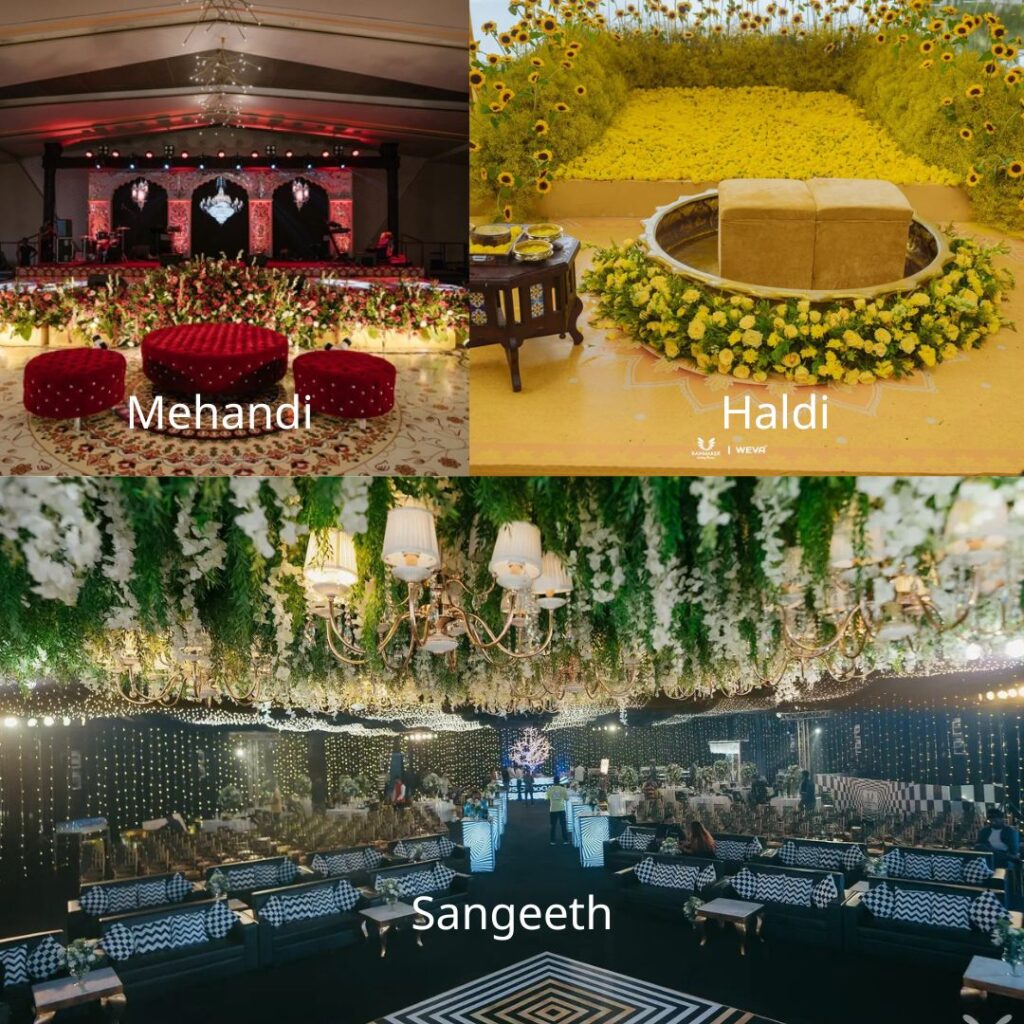Blending Traditions: The Fusion of Kerala and North Indian Wedding Customs
Kerala is known for its rich cultural heritage, especially in its weddings. Traditionally, Kerala weddings are simple and elegant affairs, deeply rooted in the customs of the local communities. However, with the intermingling of cultures across India, especially North Indian influences, Kerala weddings are evolving into vibrant celebrations that unite two diverse worlds. This blog explores the fascinating blend of Kerala and North Indian wedding traditions, considering various religious practices in Kerala.
The Traditional Kerala Wedding: A Brief Overview
Kerala weddings are considered simple and traditional weddings which adhere to the traditional principles. Hindus, Christians, and Muslims all over Kerala each abide by the traditions and customs essential to the state.
Hindu Weddings: A Hindu wedding in Kerala is usually short, unlike the extravagant ceremonies found in North India. The marriage ritual, referred to as “Kalyanam,” occurs either at a temple or the bride’s residence, involving simple customs like exchanging garlands and tying the holy thread (thali). The whole customs finishes in one hour. The function typically includes a classic “sadya” (feast) served on banana leaves.

Christian Weddings: Kerala Christian weddings have adopted most Western-style weddings but still have the Kerala touch. The traditional wedding takes place in a church where the couple makes vows, exchange rings, and are blessed by the priest.

Muslim Weddings: In a Kerala Muslim wedding, the bride and groom are seated separately as a Qazi officiates the Nikaah ceremony. The groom proposes through the Qazi, and the bride agrees by saying “Qubool.” The groom then offers the Mahr, a compulsory present, to the bride. Next, they proceed to sign the Nikkahnaama, which is the official marriage certificate. The couple, their heads veiled, accepts blessings and presents, ending the ceremony with prayer recitations.

The North Indian Influence: Adding Vibrancy to Kerala Weddings
By far the presence of North Indian culture within the rituals of a Kerala wedding has soared over the years due to the numerous families who are trying to adopt some of these customs. This creates a distinctive fusion of Southern and Northern Indian traditions, adding a spectacular touch to the wedding ceremony that captivates all the guests.
Mehendi, Sangeet and Haldi Ceremonies:

Mehendi, Sangeet, and Haldi ceremonies were not part of previous Kerala Weddings. However, because of the influence of North Indian culture, such occasions are gradually becoming popular. One of the rituals that are followed in most Kerala weddings is the Mehendi where the bride’s hands and feet are adorned with henna designs. Similarly, the Sangeet, a musical night and dance, is finding its place and is adding energy to the wedding events.
The Haldi ceremony, in which a paste of turmeric is applied to the bride and groom for blessings and to enhance their glow, is also finding its place in Kerala weddings, symbolizing joy and purity. Together, these rituals enrich the overall wedding experience, blending traditional and contemporary elements.
Baraat and Chadar:
A new trend that has emerged in the recent past is the introduction of the ‘baraat’ in North Indian style in which the groom comes either on a horse or in a fancy car along with a group of relatives and friends dancing to the beats of the dhol. Moreover, the idea of themed baraats is gaining traction, particularly with a Kerala-themed baraat that features traditional Chenda melam drumming, representations of Maveli, and lively dancers showcasing folk performances.
This adds a delightful twist to the traditional baraat experience. Besides the groom’s baraat, the concept of the bride entering in a palanquin or under a Chadar, a ceremonial canopy is also being followed in North Indian weddings. Even these chadars are customized to reflect the couple’s unique style and preferences, adding a personal touch to the ceremony. This grand entry along with the bride being taken to the mandap adds a royal and a visual appeal to the wedding and gives a good memory.
Wedding Attire: (Bride)
The influence of North Indian culture has introduced more vibrant colors and elaborate designs into bridal fashion across all communities. Hindu brides increasingly opting for lehengas, heavily embroidered saris, or a fusion of traditional and modern attire. Christian brides are blending the classic white wedding gown with elements of North Indian style, such as intricate embroidery or bold colors in reception outfits. Muslim brides are incorporating richly adorned shararas or ghagras with a touch of North Indian flair, adding luxurious fabrics and elaborate patterns.
Groom: In the same way, grooms are adopting North Indian fashion trends. Hindu brides are opting for sherwanis and turbans over the conventional Kerala mundu. Christian grooms frequently enhance their suits or tuxedos with North Indian accents such as a colorful stole or elaborately crafted waistcoats. Muslim grooms are embracing sherwanis, and traditional turbans or headwear, combining Kerala’s simplicity with North Indian elegance.
Food and Feasting:
Cuisine plays a crucial role in every wedding ceremony, with Kerala weddings no different. The classic “sadya,” a vegetarian banquet presented on a banana leaf, continues to be the main attraction of the wedding feast. Yet, due to North Indian influences, there is an expanded selection of dishes, which now includes popular North Indian dishes such as paneer dishes, chole bhature, and kebabs. This mix of cuisines appeals to guests with different tastes and contributes to celebrating diversity and togetherness
Uniting Religious Traditions: A Harmonious Blend
The wedding customs in Kerala display religious diversity, and the incorporation of North Indian influences signifies a harmonious fusion of cultures
- Hindu Weddings: The practice of North Indian traditions in Hindu weddings has also become common, and the most popular of these is the seven pheras that involve circling a sacred fire. This practice was not a part of Kerala weddings earlier, but now it is followed to depict the journey of the couple as the husband and wife.
- Christian Weddings: Kerala Christian weddings also include North Indian customs. For example, some couples are now adopting the practice of wearing a “mangalsutra”– a necklace that is normally worn by the bride during a traditional Hindu wedding.
- Muslim Weddings: North Indian influence is also seen in Muslim weddings. One of the traditions that have been adopted in Kerala Muslim weddings is the gift giving to the bride commonly referred to as ‘jahez’ in North India. Also, the classical meal served to the bride and groom following the Kerala Muslim marriage ceremony is now accompanied by North Indian dishes
The Cultural Significance of Blending Traditions
The merging of Kerala and North Indian wedding customs is more than just a trend; it is a reflection of the broader cultural integration taking place across India. This fusion represents the coming together of different communities, celebrating their shared values while respecting their unique traditions.
- Breaking Stereotypes: Incorporating North Indian elements into Kerala weddings breaks the stereotype of Kerala weddings being too plain. It demonstrates that simplicity and grandeur can coexist, forming a harmonious and significant event.
- Promoting Unity: In a nation like India, with a wide range of cultures that can cause divisions, incorporating various wedding traditions emphasizes the unity that supports the country’s diversity. It emphasizes the concept that even with variations in language, traditions, and faiths, a common happiness exists in honoring love and marriage.
- Cultural Exchange: Blending North Indian traditions into Kerala weddings is another way of cultural exchange, bringing together families from various regions to understand and value each other’s customs. This interaction enhances the wedding experience and promotes a greater comprehension and appreciation for varied cultural traditions.
Kerala-style weddings with a pinch of North Indian influence are a perfect example of how traditions can be modified and changed with time. Such interweaving not only brings color and liveliness to the ceremonies but also shows that the different cultures can come together in harmony. From the colorful and fun Mehendi and Sangeet nights to the impressive baraat and the mix of Indian outfits and food, these weddings are the epitome of the two cultures. More and more couples are opting for fusion weddings where they bring in elements of different cultures into their wedding, which means that the tradition of Kerala weddings will only expand and every new union will be as special as the union of two people in love



